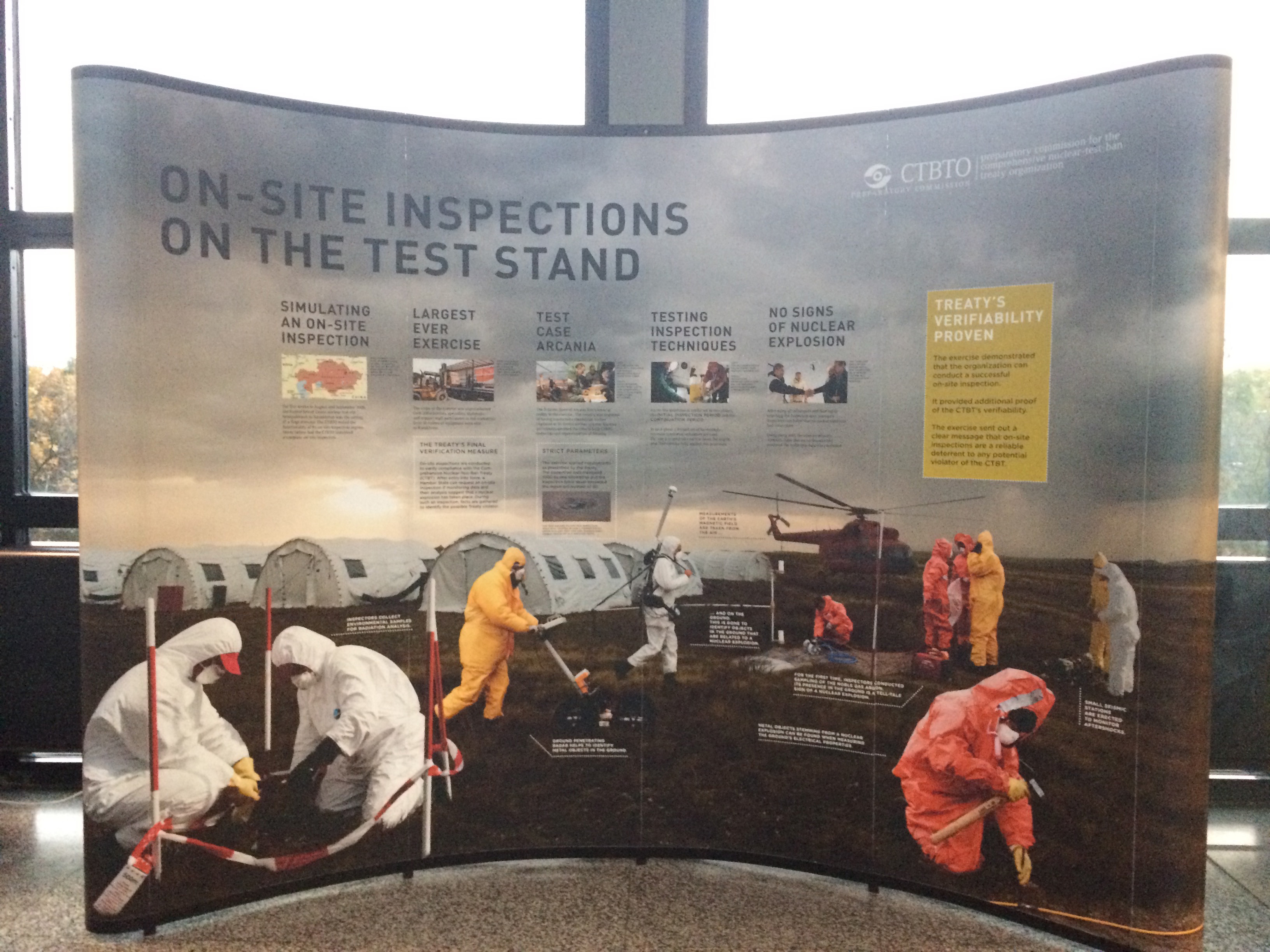![CTBTO Executive Secretary Lassina Zerbo. Image by Mikael Sjöberg [CC by 2.0]. Stockholm, 2014. CTBTO Executive Secretary Lassina Zerbo. Image by Mikael Sjöberg [CC by 2.0]. Stockholm, 2014.](/sites/default/files/09-25-18/-ctbto_executive_secretary_lassina_zerbo_13758433574_1.jpg)
On Aug. 29, flanked by victims of Soviet nuclear testing, Lassina Zerbo, the executive secretary of the Preparatory Commission for the Comprehensive Nuclear-Test-Ban Treaty Organization (CTBTO), spoke from Kazakstan about the need to end nuclear testing forever. Kazakhstan is home to the former Soviet nuclear test site at Semipalatinsk, which closed on Aug. 29, 1991, a day that has been adopted as the International Day Against Nuclear Tests. In a joint statement with Kazakhstan's foreign minister, Kairat Abdrakhmanov, Zerbo said: "It is high time to bring the Comprehensive Nuclear-Test-Ban Treaty into force. We owe it to ourselves and to future generations."
Zerbo's statement evoked the usual fanfare and frustration. Fifty years in the making, the Comprehensive Nuclear-Test-Ban Treaty (CTBT) has been caught in legal limbo since 1996, hung up on its own provision that requires 44 specific states to ratify it. When the U.S. Senate narrowly voted against the treaty in 1999, 41 of the required countries had signed and more than half of those had ratified. But with the United States mired in partisan politics, the incentive for the remaining holdouts to approve the treaty was gone. China, Egypt, India, Iran, Israel, North Korea, and Pakistan have since also failed to ratify.
In the era of Donald Trump, traditional arms control and disarmament treaties feel like vestiges of a bygone era, but Zerbo, a 54-year-old geophysicist born in Burkina Faso, insists that they are relevant.
After a recent trip to South Korea, he opined that "the CTBT and its organization can play an important role in finding a lasting solution to the nuclear problem on the Korean Peninsula."
But as diplomats in Washington and Pyongyang search haltingly for common ground, the machinery of the CTBTO has continued to operate smoothly, as it has for more than two decades. Over the years, the Vienna-based provisional organization developed a functional global monitoring system for nuclear tests that is 90 percent complete. The International Monitoring System comprises 321 stations and 16 laboratories that use seismic, hydroacoustic, infrasound, and radionuclide (for detecting certain radioactive isotopes in gases and on particles) signals to help distinguish natural explosions, such as earthquakes, from man-made ones, such as nuclear tests. The stations are located in places as remote as Antarctica, Tristan da Cunha in the south Atlantic Ocean, and Crozet Islands in the south Indian Ocean, as well as Rarotonga in the Cook Islands, Easter Island, and Ulaanbataar, Mongolia.
This global network of sensors, as Zerbo discovered in 2004, has far wider application than just detecting nuclear tests. On Dec. 26 of that year, a devastating earthquake and subsequent tsunami in the Indian Ocean claimed the lives of more than 225,000 people in 14 coastal countries from Thailand to South Africa. The CTBTO's monitoring system collected data that could have helped warn people. But there were no protocols in place at the time to share such information.
It was a missed opportunity that Zerbo, who joined the commission that year, was determined not to repeat. In 2006, he and then-Executive Secretary Tibor Toth won approval from the more than 150 member states to use the nuclear test monitoring system to provide early warning for tsunamis. The data-sharing failure prompted soul-searching of a different sort as well: If a country tested a nuclear weapon before the treaty entered into force, how would—or could—the provisional commission respond?
North Korea tested its first nuclear weapon in 2006. Toth and Zerbo decided to fly back to Vienna from a U.N. meeting in New York to brief member states, just as they would have if the treaty were in force, establishing a pattern of behavior that Zerbo intensified after his election to lead the commission in 2013.
In the five years after, Zerbo has met with foreign ministers, prime ministers, and presidents; launched a trans-Atlantic youth group comprising university graduates interested in pursuing the goals of the treaty; and recruited eminent advisors such as Federica Mogherini, the EU's foreign-policy chief, and former U.S. Defense Secretary William Perry. Zerbo met with Israeli Prime Minister Benjamin Netanyahu in 2016, telling the press afterward that Israel's ratification of the treaty was a matter of "when, rather than if." He even managed to get the Chinese to install monitoring stations and agree to share data.
Zerbo admits his was an unusual route to diplomacy. He studied geology (which he calls "rocks and dust") as an undergraduate and earned a Ph.D. in geophysics from the Université de Paris XI in 1993. After a decade of leading projects for the mining company Anglo American in eastern and southern Africa, he came to Vienna, along with his wife and three daughters, to direct the CTBTO's International Data Centre.
But for all of his successes, some efforts are out of his control. The United States will still not back the treaty. Buried in the 2018 Nuclear Posture Review (a document that details U.S. nuclear plans), the Trump administration announced it would not seek ratification. This is hardly surprising, except that the United States has conducted 1,030 nuclear tests (more than all other countries combined) and would gain the most by signing a treaty that will end nuclear weapons testing forever. What's more, the concerns that prompted senators to vote against the treaty in 1999 are no longer compelling. Since 1997, U.S. national laboratory directors and the head of U.S. Strategic Command have annually certified the reliability of the U.S. nuclear weapon stockpile. The CTBTO's ability to detect and identify six North Korean nuclear tests since 2006 has helped bolster the credibility of the monitoring system and the organization.
This past summer, Zerbo cautiously supported negotiations with North Korea on denuclearization but stressed the importance of verification. North Korea's joining the treaty would enhance the prospects for real nuclear disarmament, and U.S. ratification could trigger a domino effect on the remaining countries. But action by either country to ratify the CTBT seems unlikely.
When asked if the prospect of the treaty never entering into force diminished Zerbo's enthusiasm for his job, he paused and then spoke frankly: "I have no other choice. If you lose hope here, everything falls apart. It reminds me of visiting Jordan where they say, 'We're at the lowest point on Earth. The only way is up.' For arms control and nonproliferation today, there's no way but up. Up goes by the CTBT."









